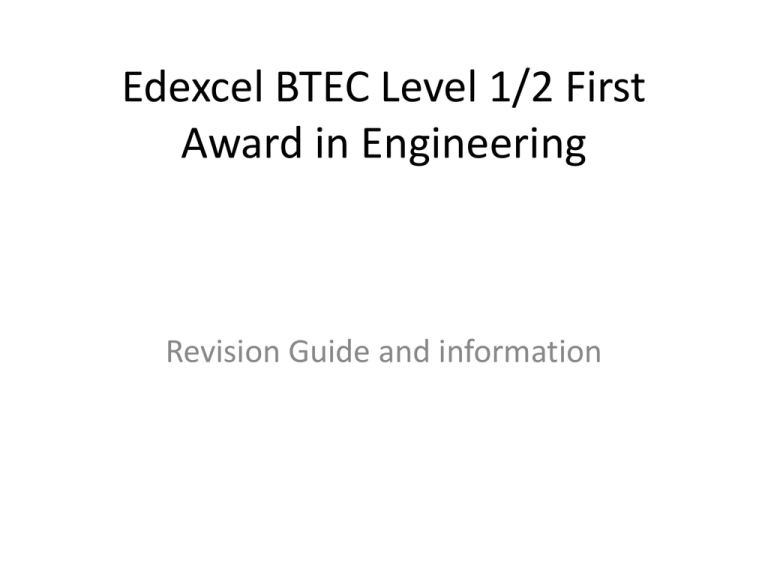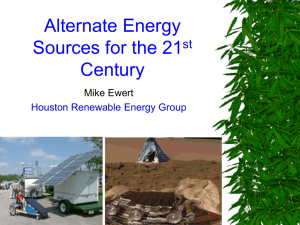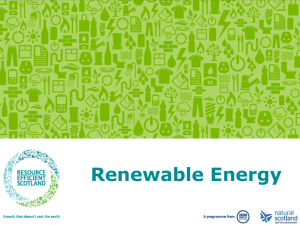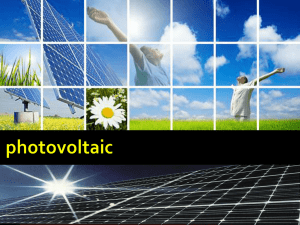Engineering Revision Materials Unit 1 Section Cx
advertisement

Edexcel BTEC Level 1/2 First
Award in Engineering
Revision Guide and information
What to expect / Important Information
Date of Examination:
Wednesday 22nd January
Examination duration:
1 Hour
Format of Examination:
The exam will be online, requiring you to answer questions on a
computer. The questions will vary in style, some being multiple
choice, some connecting answers to each other and other
requiring extended written answers.
This examination counts for 25% of your entire grade, and so is extremely important! By
securing a good grade now, you will have one less examination to worry about in June/July
when you sit your GCSE examinations.
Remember there are 3 sections that the questions in the examination can come from. We
have covered all of these in detail during our examination preparation, and will continue to do
work on this until the examination date.
Topics / Content
Learning aim C: Understand how engineering contributes to a sustainable future
Topic C1: Sustainable engineered products
Characteristics, applications and advantages/disadvantages of Life Cycle Assessment (LCA) at the following stages for engineered products:
● raw materials extraction
● material production
● production of parts
● assembly
● use
● disposal/recycling.
Topic C2: Minimising waste production in engineering
Characteristics, applications and advantages/disadvantages of minimising waste production throughout the life cycle of engineered products,
using the four Rs:
● Reduce materials and energy.
● Reuse materials and products where applicable.
● Recover energy from waste.
● Recycle materials and products or use recycled materials.
Topic C3: Lean manufacturing
Characteristics, applications and advantages/disadvantages of minimising waste at the production stage in engineering, using the following
lean manufacturing techniques:
● Just-in-Time (JIT)
● Kaizen
● poka-yoke.
Topic C4: Renewable sources of energy in engineering
Processes, characteristics, applications and advantages/disadvantages of using the following renewable sources of energy in engineering:
● wind energy using turbines and wind farms
● solar energy using photovoltaic cells and solar water heaters
● hydro energy using dams, barrages and wave power
● geothermal energy using heat pumps and exchangers.
Topics / Content
Learning aim C: Understand how engineering contributes to a sustainable future
Topic C1: Sustainable engineered products
Characteristics, applications and advantages/disadvantages of Life Cycle Assessment (LCA) at the following
stages for engineered products:
Life-cycle assessment (LCA, also known as life-cycle analysis, ecobalance, and cradle-tograve analysis)[1] is a technique to assess environmental impacts associated with all the stages
of a product's life from-cradle-to-grave (i.e., from raw material extraction through materials
processing, manufacture, distribution, use, repair and maintenance, and disposal or
recycling). LCAs can help avoid a narrow outlook on environmental concerns by:
Compiling an inventory of relevant energy and material inputs and environmental releases;
Evaluating the potential impacts associated with identified inputs and releases;
Interpreting the results to help make a more informed decision.[2]
Topics / Content
Learning aim C: Understand how engineering contributes to a sustainable future
Topic C1: Sustainable engineered products
Characteristics, applications and advantages/disadvantages of Life Cycle Assessment (LCA) at the following stages for engineered products:
Life-cycle assessment (LCA, also known as life-cycle analysis, ecobalance, and cradle-to-grave analysis)[1] is a technique to assess environmental impacts associated with all the stages of a
product's life from-cradle-to-grave (i.e., from raw material extraction through materials processing, manufacture, distribution, use, repair and maintenance, and disposal or recycling). LCAs
can help avoid a narrow outlook on environmental concerns by:
Compiling an inventory of relevant energy and material inputs and environmental releases;
Evaluating the potential impacts associated with identified inputs and releases;
Interpreting the results to help make a more informed decision.[2]
Cradle-to-grave[edit]
Cradle-to-grave is the full Life Cycle Assessment from resource extraction ('cradle') to use phase and disposal phase ('grave'). For example, trees produce paper, which can be recycled into
low-energy production cellulose (fiberised paper) insulation, then used as an energy-saving device in the ceiling of a home for 40 years, saving 2,000 times the fossil-fuel energy used in its
production. After 40 years the cellulose fibers are replaced and the old fibers are disposed of, possibly incinerated. All inputs and outputs are considered for all the phases of the life cycle.
Cradle-to-gate[edit]
Cradle-to-gate is an assessment of a partial product life cycle from resource extraction (cradle) to the factory gate (i.e., before it is transported to the consumer). The use phase and
disposal phase of the product are omitted in this case. Cradle-to-gate assessments are sometimes the basis for environmental product declarations (EPD) termed business-to-business
EDPs.[20] One of the significant uses of the cradle-to-gate approach compiles the life cycle inventory (LCI) using cradle-to-gate. This allows the LCA to collect all of the impacts leading up to
resources being purchased by the facility. They can then add the steps involved in their transport to plant and manufacture process to more easily produce their own cradle-to-gate values
for their products.[21]
Cradle-to-cradle or open loop production[edit]
See also: Cradle to Cradle Design
Cradle-to-cradle is a specific kind of cradle-to-grave assessment, where the end-of-life disposal step for the product is a recycling process. It is a method used to minimize the
environmental impact of products by employing sustainable production, operation, and disposal practices and aims to incorporate social responsibility into product development.[22] From
the recycling process originate new, identical products (e.g., asphalt pavement from discarded asphalt pavement, glass bottles from collected glass bottles), or different products (e.g., glass
wool insulation from collected glass bottles).
Allocation of burden for products in open loop production systems presents considerable challenges for LCA. Various methods, such as the avoided burden approach have been proposed
to deal with the issues involved.
Gate-to-gate[edit]
Gate-to-gate is a partial LCA looking at only one value-added process in the entire production chain. Gate-to-gate modules may also later be linked in their appropriate production chain to
form a complete cradle-to-gate evaluation.[23]
Well-to-wheel[edit]
Well-to-wheel is the specific LCA used for transport fuels and vehicles. The analysis is often broken down into stages entitled "well-to-station", or "well-to-tank", and "station-to-wheel" or
"tank-to-wheel", or "plug-to-wheel". The first stage, which incorporates the feedstock or fuel production and processing and fuel delivery or energy transmission, and is called the
"upstream" stage, while the stage that deals with vehicle operation itself is sometimes called the "downstream" stage. The well-to-wheel analysis is commonly used to assess total energy
consumption, or the energy conversion efficiency and emissions impact of marine vessels, aircraft and motor vehicles, including their carbon footprint, and the fuels used in each of these
transport modes.[24][25][26][27]
The well-to-wheel variant has a significant input on a model developed by the Argonne National Laboratory. The Greenhouse gases, Regulated Emissions, and Energy use in Transportation
(GREET) model was developed to evaluate the impacts of new fuels and vehicle technologies. The model evaluates the impacts of fuel use using a well-to-wheel evaluation while a
traditional cradle-to-grave approach is used to determine the impacts from the vehicle itself. The model reports energy use, greenhouse gas emissions, and six additional
pollutants: volatile organic compounds (VOCs), carbon monoxide (CO), nitrogen oxide (NOx), particulate matter with size smaller than 10 micrometre (PM10), particulate matter with size
smaller than 2.5 micrometre (PM2.5), and sulfur oxides (SOx).[18]
Economic input–output life cycle assessment[edit]
Economic input–output LCA (EIOLCA) involves use of aggregate sector-level data on how much environmental impact can be attributed to each sector of the economy and how much each
sector purchases from other sectors.[28] Such analysis can account for long chains (for example, building an automobile requires energy, but producing energy requires vehicles, and
building those vehicles requires energy, etc.), which somewhat alleviates the scoping problem of process LCA; however, EIOLCA relies on sector-level averages that may or may not be
representative of the specific subset of the sector relevant to a particular product and therefore is not suitable for evaluating the environmental impacts of products. Additionally the
translation of economic quantities into environmental impacts is not validated.[29]
Topics / Content
Topic C2: Minimising waste production in engineering
Characteristics, applications and advantages/disadvantages of minimising waste production throughout the life cycle of
engineered products, using the four Rs:
Waste Management
2. Reduce, reuse, recycle and reclaim (4Rs)
The 4Rs represent, in order of priority, the steps for responsible waste management: reduce at the source, reuse, recycle and reclaim. These steps help reduce waste of natural resources,
while cutting down greenhouse gas emissions generated by transport and land filling.
A. Reduce at the source
Source reduction is the most effective step of the 4Rs because it encourages people to think about their consumption. The following principle should always be borne in mind: the easiest
waste to manage is waste that is not generated in the first place. Reducing consumption automatically creates less waste, and reduces use of natural resources and energy to produce new
goods and products. There are a number of ways to achieve reductions at the source, for example, by avoiding single-use products. An effective strategy for achieving this goal involves
setting clear and measurable targets, implementing appropriate measures and periodically assessing progress. This approach makes it easier to target efforts and measure their outcomes.
Example: Reducing paper use
Ways to reduce paper use include:
Programming automatic double-sided printing or setting up a dedicated printer using paper already printed on one side
Using single spacing
Reducing margins
Printing as little as possible
Example: Reducing packaging
Ways to reduce packaging include:
Imposing criteria on suppliers
Purchasing products in bulk or more concentrated products
Selecting products with no packaging or with compostable, reusable or recyclable packaging
B. Reuse
Reusing means finding a second life for a product or using it repeatedly without necessarily transforming its appearance or properties. Repairing an item, using used goods or finding other
uses for an item are various examples of reuse. According to Recyc-Québec, reuse has impacts on the three areas of sustainable development (the economy, society and the environment)
since it helps create jobs, helps preserve natural resources and redistributes goods through resale at second-hand stores.
C. Recycle
Recycling means transforming waste in order to create new products rather than using virgin material. For example, plastic bottles are used to make polar fleece garments and aluminum
from cans is melted down to make new cans.
D. Reclaim
Reclaiming means deriving value that would otherwise go to waste from an item that has reached the end of its useful life; it means using some of the properties of waste through
conversion or transformation. Biological treatment such as composting and anaerobic digestion as well as heat treatment (such as gasification and pyrolysis) are examples of waste
reclamation.
Topics / Content
Topic C3: Lean manufacturing
Characteristics, applications and advantages/disadvantages of minimising waste at the production stage in engineering,
using the following lean manufacturing techniques:
Just in time production (JIT)
Just in time is a ‘pull’ system of production, so actual orders provide a signal for when a product should be manufactured.
Demand-pull enables a firm to produce only what is required, in the correct quantity and at the correct time.
This means that stock levels of raw materials, components, work in progress and finished goods can be kept to a
minimum. This requires a carefully planned scheduling and flow of resources through the production process. Modern
manufacturing firms use sophisticated production scheduling software to plan production for each period of time, which
includes ordering the correct stock. Information is exchanged with suppliers and customers through EDI (Electronic Data
Interchange) to help ensure that every detail is correct.
Supplies are delivered right to the production line only when they are needed. For example, a car manufacturing plant
might receive exactly the right number and type of tyres for one day’s production, and the supplier would be expected to
deliver them to the correct loading bay on the production line within a very narrow time slot.
Advantages of JIT
Lower stock holding means a reduction in storage space which saves rent and insurance costs
As stock is only obtained when it is needed, less working capital is tied up in stock
There is less likelihood of stock perishing, becoming obsolete or out of date
Avoids the build-up of unsold finished product that can occur with sudden changes in demand
Less time is spent on checking and re-working the product of others as the emphasis is on getting the work right first
time
Disadvantages of JIT
There is little room for mistakes as minimal stock is kept for re-working faulty product
Production is very reliant on suppliers and if stock is not delivered on time, the whole production schedule can be
delayed
There is no spare finished product available to meet unexpected orders, because all product is made to meet actual
orders – however, JIT is a very responsive method of production
Topics / Content
Topic C3: Lean manufacturing
Characteristics, applications and advantages/disadvantages of minimising waste at the production stage in engineering, using the
following lean manufacturing techniques:
Japanese for "improvement" or "change for the best", refers to philosophy or practices that focus upon continuous
improvement of processes in manufacturing, engineering, and business management. It has been applied in
healthcare,[1] psychotherapy,[2] life-coaching, government, banking, and other industries. When used in the business sense and
applied to the workplace, kaizen refers to activities that continually improve all functions, and involves all employees from
the CEO to the assembly line workers. It also applies to processes, such as purchasing and logistics, that cross organizational
boundaries into the supply chain.[3] By improving standardized activities and processes, kaizen aims to eliminate waste (see lean
manufacturing). Kaizen was first implemented in several Japanese businesses after the Second World War, influenced in part by
American business and quality management teachers who visited the country. It has since spread throughout the world [4] and is
now being implemented in environments outside of business and productivity.
Poka-yoke (ポカヨケ?) [poka yoke] is a Japanese term that means "mistake-proofing". A poka-yoke is any mechanism in a lean
manufacturing process that helps an equipment operator avoid (yokeru) mistakes (poka). Its purpose is to eliminate product
defects by preventing, correcting, or drawing attention to human errors as they occur.[1] The concept was formalised, and the
term adopted, by Shigeo Shingo as part of the Toyota Production System.[2][3] It was originally described as baka-yoke, but as this
means "fool-proofing" (or "idiot-proofing") the name was changed to the milder poka-yoke.
Poka-yoke example: Ethernet cable plug is designed to be plugged in in only one direction.
More broadly, the term can refer to any behavior-shaping constraint designed into a process to prevent incorrect operation by the
user.[citation needed]Similarly, a constraint that is part of the product (or service) design is considered Design for
Manufacturability or Design for X. A modern Poka-Yoke application is when a driver must press on the brake pedal (a process step,
therefore a poka-yoke)) prior to starting an automobile. The interlock serves to prevent unintended movement of the car. An
additional poka-yoke would be the switch in the car's gear shift that requires the car to be in Park or Neutral before the car can be
started. These serve as behavior-shaping constraints as the sequence of "car in park (or neutral)" and/or "Foot on brake" must be
performed before the car is allowed to start. Over time, the driver's behavior is conformed with the requirements by repetition
and habit.
Topics / Content
Topic C4: Renewable sources of energy in engineering
Processes, characteristics, applications and advantages/disadvantages of using the following renewable sources of
energy in engineering:
Types of Solar Energy
Solar energy technologies use the sun's energy and light to provide heat, light, hot water, electricity, and even cooling,
for homes, businesses, and industry. There are a variety of technologies that have been developed to take advantage of
solar energy.
Solar Energy Technologies:
Photovoltaic Systems
Producing electricity directly from sunlight.
Solar Hot Water
Heating water with solar energy.
Solar Electricity
Using the sun's heat to produce electricity.
Passive Solar Heating and Daylighting
Using solar energy to heat and light buildings.
Solar Process Space Heating and Cooling
Industrial and commercial uses of the sun's heat.
Topics / Content
Topic C4: Renewable sources of energy in engineering
Processes, characteristics, applications and advantages/disadvantages of using the following renewable sources of
energy in engineering:
Wind Energy
Modern wind turbines tower above one of their ancestors-an old windmill used for pumping water. Credit: Warren Gretz
We have been harnessing the wind's energy for hundreds of years. From old Holland to farms in the United States,
windmills have been used for pumping water or grinding grain. Today, the windmill's modern equivalent - a wind turbine
- can use the wind's energy to generate electricity.
Wind turbines, like windmills, are mounted on a tower to capture the most energy. At 100 feet (30 meters) or more
aboveground, they can take advantage of the faster and less turbulent wind. Turbines catch the wind's energy with their
propeller-like blades. Usually, two or three blades are mounted on a shaft to form a rotor.
A blade acts much like an airplane wing. When the wind blows, a pocket of low-pressure air forms on the downwind side
of the blade. The low-pressure air pocket then pulls the blade toward it, causing the rotor to turn. This is called lift. The
force of the lift is actually much stronger than the wind's force against the front side of the blade, which is called drag.
The combination of lift and drag causes the rotor to spin like a propeller, and the turning shaft spins a generator to make
electricity.
Wind turbines can be used as stand-alone applications, or they can be connected to a utility power grid or even
combined with a photovoltaic (solar cell) system. For utility-scale sources of wind energy, a large number of wind
turbines are usually built close together to form awind plant. Several electricity providers today use wind plants to supply
power to their customers.
Stand-alone wind turbines are typically used for water pumping or communications. However, homeowners, farmers,
and ranchers in windy areas can also use wind turbines as a way to cut their electric bills.
Small wind systems also have potential as distributed energy resources. Distributed energy resources refer to a variety of
small, modular power-generating technologies that can be combined to improve the operation of the electricity delivery
system.
Topics / Content
Topic C4: Renewable sources of energy in engineering
Processes, characteristics, applications and advantages/disadvantages of using the following renewable sources of energy in
engineering:
Geothermal Energy
The Earth's heat-called geothermal energy-escapes as steam at a hot springs in Nevada. Credit: Sierra Pacific
Geothermal energy is the heat from the Earth. It's clean and sustainable. Resources of geothermal energy range from the shallow
ground to hot water and hot rock found a few miles beneath the Earth's surface, and down even deeper to the extremely high
temperatures of molten rock called magma.
Almost everywhere, the shallow ground or upper 10 feet of the Earth's surface maintains a nearly constant temperature between
50° and 60°F (10° and 16°C). Geothermal heat pumps can tap into this resource to heat and cool buildings. A geothermal heat
pump system consists of a heat pump, an air delivery system (ductwork), and a heat exchanger-a system of pipes buried in the
shallow ground near the building. In the winter, the heat pump removes heat from the heat exchanger and pumps it into the
indoor air delivery system. In the summer, the process is reversed, and the heat pump moves heat from the indoor air into the
heat exchanger. The heat removed from the indoor air during the summer can also be used to provide a free source of hot water.
In the United States, most geothermal reservoirs of hot water are located in the western states, Alaska, and Hawaii. Wells can be
drilled into underground reservoirs for the generation of electricity. Some geothermal power plants use the steam from a
reservoir to power a turbine/generator, while others use the hot water to boil a working fluid that vaporizes and then turns a
turbine. Hot water near the surface of Earth can be used directly for heat. Direct-use applications include heating buildings,
growing plants in greenhouses, drying crops, heating water at fish farms, and several industrial processes such as pasteurizing
milk.
Hot dry rock resources occur at depths of 3 to 5 miles everywhere beneath the Earth's surface and at lesser depths in certain
areas. Access to these resources involves injecting cold water down one well, circulating it through hot fractured rock, and
drawing off the heated water from another well. Currently, there are no commercial applications of this technology. Existing
technology also does not yet allow recovery of heat directly from magma, the very deep and most powerful resource of
geothermal energy.
Many technologies have been developed to take advantage of geothermal energy - the heat from the earth. NREL performs
research to develop and advance technologies for the following geothermal applications:
Geothermal Energy Technologies:
Geothermal Electricity Production
Generating electricity from the earth's heat.
Geothermal Direct Use
Producing heat directly from hot water within the earth.
Geothermal Heat Pumps
Using the shallow ground to heat and cool buildings.
Topics / Content
Topic C4: Renewable sources of energy in engineering
Processes, characteristics, applications and advantages/disadvantages of using the following renewable sources of
energy in engineering:
Hydropower
Hydroelectric power generates about 10% of the nation's energy. Credit: US Army Corps of Engineers
Flowing water creates energy that can be captured and turned into electricity. This is called hydroelectric
power or hydropower.
The most common type of hydroelectric power plant uses a dam on a river to store water in a reservoir. Water released
from the reservoir flows through a turbine, spinning it, which in turn activates a generator to produce electricity. But
hydroelectric power doesn't necessarily require a large dam. Some hydroelectric power plants just use a small canal to
channel the river water through a turbine.
Another type of hydroelectric power plant - called a pumped storage plant - can even store power. The power is sent
from a power grid into the electric generators. The generators then spin the turbines backward, which causes the
turbines to pump water from a river or lower reservoir to an upper reservoir, where the power is stored. To use the
power, the water is released from the upper reservoir back down into the river or lower reservoir. This spins the turbines
forward, activating the generators to produce electricity.
A small or micro-hydroelectric power system can produce enough electricity for a home, farm, or ranch.









